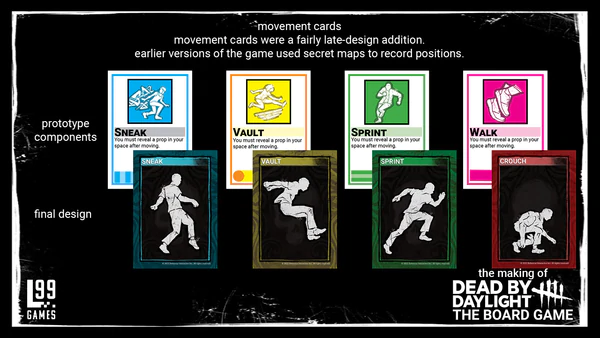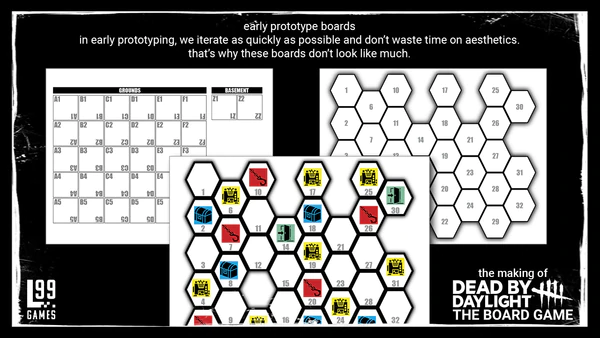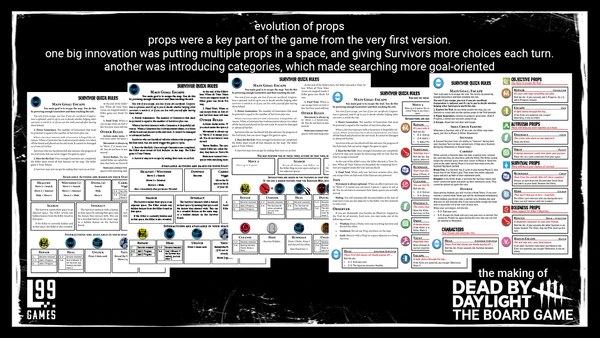Dead by Daylight: The Board Game - A Frighteningly Good Playtest
- Dyllon Graham
- Apr 19, 2022
- 5 min read
After a hands-on playtest, Dyllon Graham can’t recommend this adaptation enough to both fans and newcomers to Dead by Daylight alike.

On March 29, popular board game manufacturer Level 99 Games launched a Kickstarter campaign for their Dead By Daylight table-top adaptation. The popular asymmetric horror multiplayer video game is slated to celebrate its sixth-year anniversary this June. It’s no surprise that the board game spin-off was fully funded within just a few short hours, earning the title of “most-backed and most-funded project” in Level 99 Games' 10-year history. So, how’s the gameplay? You’ll find that the Kickstarter is bursting with updates, images, and rule sets intended to answer that very question.
On the game board, maps are divided into tiles. Some beloved realms, like Macmillan Estate, are considered smaller maps with fewer tiles while others bolster more tiles to reflect the size of the maps from the source material. Each round has a sequence of phases, starting with the planning phase where survivors pick from one of five movement cards in their hand. The color or type of movement selected will determine where they move. If a red sneak card is selected, the survivor can only move to an adjacent red space. Conversely, the killer gets the chance to move two spaces, planning their movements in sequence.
In the planning phase, all the players have to lock in their movement before the actions of the round begin. This creates uniquely tense situations where the Killer has to anticipate where survivors will go instead of moving to their current position. Anytime a player, killer or survivor, moves into a tile, they have to flip over one of the predetermined upside-down tokens in that tile. These hexagonal tokens are divided into the video game’s scoring system: objective, survival, altruism, and boldness. Mechanically, this system operates this way so survivors have to discover where their generators or exit gates are by moving throughout the map, flipping their yellow objective tokens along the way. While killers have to flip their own red boldness tokens to reveal their hooks.
The movement system has a genius, layered approach that induces a familiar yet different cat and mouse feel. The Killer gets to move twice, but they’re forced to guess where their prey is going to run, injecting an element of deception into the board game. In my playtest, several survivors opted to move into my space during their turn, which incurs no penalty. Instead of playing the killer exclusive wait card, I played movement cards, moving out of the tile, allowing the survivors to effectively sneak past me. I had to learn who the boldest of my opponents were and plan my moves accordingly.
After a hexagonal tile is flipped, survivors can commit to one action, whether that is working on a generator, healing, opening a chest, or cleansing a totem. Typically, one action is allowed per player per turn, whereas killers get one action per tile moved. When it comes to generators, Dead By Daylight’s skill check system is boiled down to a six-sided dice roll featuring tally marks on each side and one side featuring a skull that signifies zero. If a survivor rolls between one and four, a progress token is added to a generator, the equivalent of a good skill check. If a survivor rolls a five, they get a great skill check and add two progress tokens to the generator. However, a killer can kick a generator to regress them entirely, taking action for that movement.
Unlike the video game, kicking a generator creates scenarios that can sometimes be incredibly advantageous instead of levying an attack. The spin on generator progress is that survivors must move each round. A survivor cannot sit on a generator throughout multiple rounds. Instead, they have to coordinate their efforts as a team, picking up where a previous teammate left off, or looping back to their generator, all the while avoiding the Killer. Once four generators are fully repaired, the exit gates power. If survivors manage to open an exit gate, which requires three successful actions, the entire team wins. It’s all or nothing.
A killer’s objectives are simple in contrast to the video game. Sacrifices are gone — the objective is simply to get 8 hook states. Once this is accomplished, the Killer wins the game. To mitigate less than desirable playstyles like camping and tunneling, each survivor is given a hook token on their character sheet. The first time a survivor is hooked, this token automatically contributes to a killer’s hook state progress. Each round that passes with a survivor on the hook awards an additional hook state token. The first time a survivor is hooked, the Killer is awarded two points: one for that unique hook and one at the end of the round. This system encourages hooking each survivor one time instead of chasing someone repetitiously. Survivors will want to unhook as soon as possible to delay the Killer's goal progress, abandoning other objectives in the process. Killers should take advantage of this pressure to leave the hook and run survivors off of generators.
I played The Trickster and got to take full advantage of his Showstopper ability throwing one knife at any survivor in my tile and connected tiles. After a survivor accrued three knives, they became injured and couldn’t be healed by any means until they removed their knives by spending an action to hop into a locker. If survivors were overzealous and accrued the fourth knife, The Trickster is awarded a free hook progress token. In contrast to movement, killers can only use their ability once per round, meaning there is an additional layer of intrinsic strategy required. Killers like the Huntress can wound survivors in adjacent tiles, the Blight gets two of each movement card, and the Hag gets to place her traps around the map, sacrificing blood points relative to the number rolled on the survivor’s dice to teleport.

Each killer seems uniquely equipped to manipulate systems to deal with survivors without feeling overpowered or over-tuned. Inversely, survivors have unique role implications, each character has a single perk only they can use. Claudette is uniquely suited to assist with healing, whereas Nea’s perks allow her to move further and faster, at the cost of an action. Perks and items have been entirely re-written to fit the board game adaptation, even the most bottom of the barrel perks, have a game-changing impact.
I was offered the opportunity to playtest Dead by Daylight™: The Board Game alongside other Fog Whisperers to provide feedback on the experience. I cannot praise the creatives at Level 99 Games enough for their masterful translation of the characters, killers, perks, and nuance of Dead By Daylight to this tabletop experience. I recommend the Collector’s Edition pledge that includes miniature figures for every original survivor and killer, as well as miniatures for generators, interactive hooks, and more.
I played a match against DieHardDiva, DragTrashly, Negaoryx, and Level 99 Games’ President David Talton Jr. and it was a stress-inducing sweat fest. I narrowly clutched victory one turn before the survivors were going to escape through the exit gates. On more than one occasion, the group erupted in shock or laughter as a dice roll entirely shifted the flow of the match. Negaoryx cleverly suggests, that you “do yourself a favor and put on a three-hour loop of Dead By Daylight ambient music for maximum immersion.
There’s still time to back the Kickstarter for Dead by Daylight™: The Board Game before it closes on April 21, 2022.












